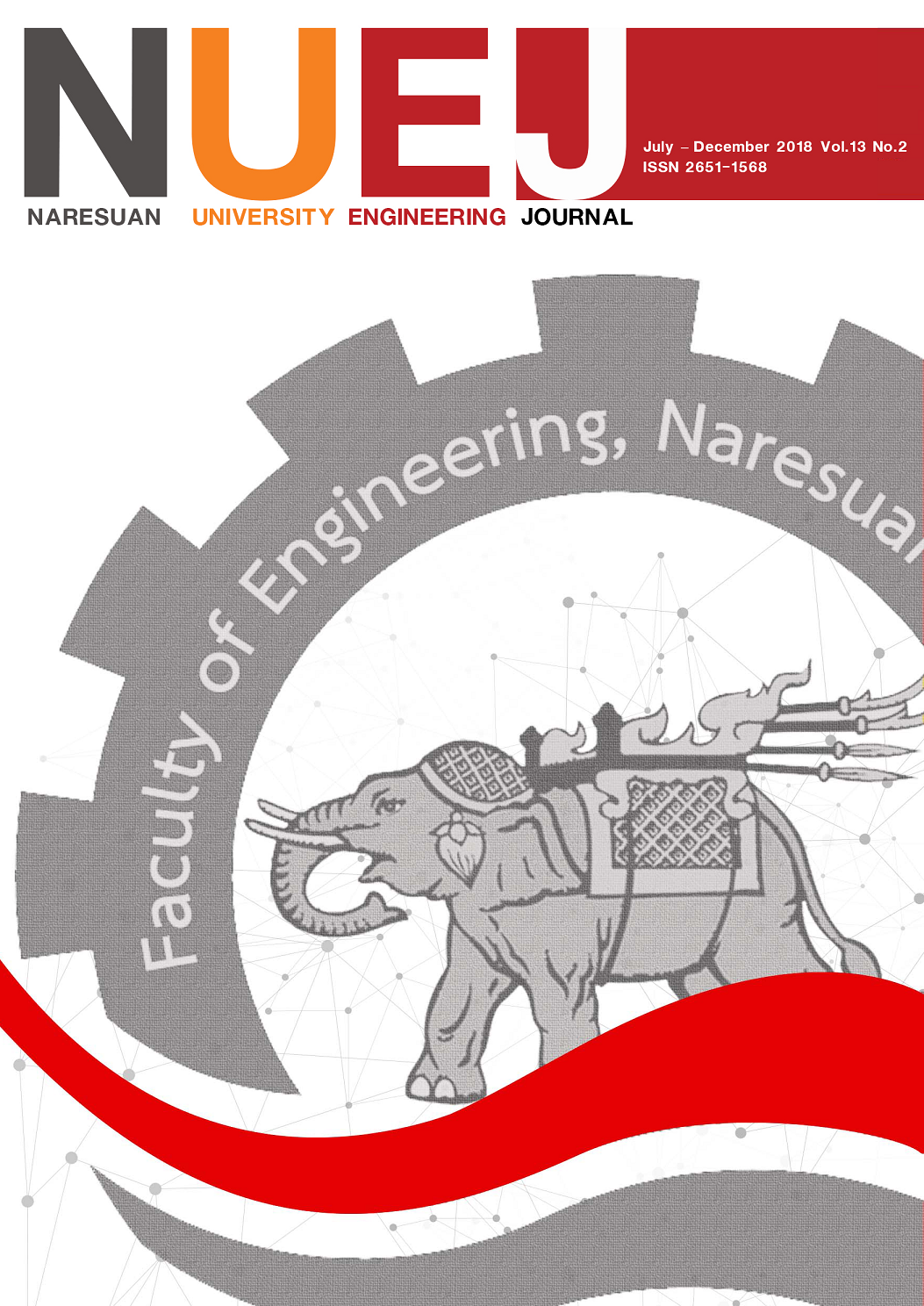Engineering Economic Value Analysis of Interlocking Block Pilot Plant Using Mae Moh Power Plant Bottom Ash
Main Article Content
Abstract
The purposes of this research are to analyze cost and engineering economic value of the interlocking block pilot plant using Mae Moh power plant bottom ash. Primary data were collected through the survey of production from interlocking block pilot plant scale 1,000 unit per day. Secondary data were collected from related documents. Net Present Value (NPV), Benefit-Cost Ratio (BCR), Internal Rate of Return (IRR) and to conduct a sensitivity analysis of the project were used to analyze cost and engineering economic value of project. The results showed that the interlocking block pilot plant investment cost is 2,027,000.00 baht, the operation cost per year is 1,707,200.00 baht, and total cost per unit is 6.12 baht. The discount rate at 3 percentages and 7.12 percentages was used to analyze. The engineering economic value analysis showed that the net present value (NPV) was equal to 7,465,205.13, 5,836,766.15 baht, Internal Rate of Return of the project (IRR) was equal to 60.51, 54.34 percentages, The Benefit Cost Ratio (BCR) was equal to 1.45, 1.42 respectively and the payback period was equal to 18.85 months. Therefore, the interlocking block pilot plant using Mae Moh power plant bottom ash project is worth for the investment.
Article Details
References
[2] Electricity Generation Authority of Thailand (EGAT), (2016). Electricity Generation Department, Mae Moh Power Plant: Annual report on operations of ash and gypsum conveyor systems division, 2016.
[3] Electricity Generation Authority of Thailand (EGAT), (2016). Byproduct Sales and Contract Management Division, EGAT, Nonthaburi: Criteria and conditions for selling bottom ash Mae Moh power plant, 2016.
[4] Larpkiattaworn, S., (2018). Progress report #1 of the research project topic: The development of interlocking block pilot plant using by-product from Mae Moh power plant. pathumthani: Thailand Institute of Scientific and Technological Research (TISTR).
[5] The benefits of bottom ash to promoting community careers., available online: http://maemoh.egat.com/
index.php/93-new/315-252
[6] Kokkamhaeng, W., (2008). Training document; Production of quality interlocking blocks. Pathumthani: Expert Centre of Innovative Materials, Thailand Institute of Scientific and Technological Research (TISTR).
[7] Saisuthanawit, S. (2018).Development of interlocking block pilot plant using Mae Moh power plant ash. Master of Engineering Thesis Industrial Engineering, Chiangmai University. (in Thai)
[8] Thailand Institute of Scientific and Technological Research (TISTR), (2017). Documentation for the research and innovation development grant, Development of interlocking block pilot plant using by-product from Mae Moh power plant project. (in Thai)
[9] Choponsat A., Minaboon N. (2013). Interlocking block of waste concrete. Research of Rajamangala University of Technology Rattanakosin. (in Thai)
[10] Amonfa K., (2016). Engineering properties improvement of interlocking block by mixing with sand. Naresuan University Engineering Journal, Vol.11, No.1, January-June 2016, pp.67-73 (in Thai)
[11] Charoennatkul C., (2014). Interlocking blocks containing oil palm ash and shells waste. journal of community development and life quality. 2(1): 103-112.(in Thai)
[12] Dasaesamoh, A., Vaji, P., Salae, P., Naesae, N., (2015). Para rubber wood fly ash containing interlocking brick. journal of yala rajabhat university, Vol.10, No.1, January-June 2015, pp.77-86 (in Thai)
[13] Thubphan, Y., (2008). Project evaluation based on economics. Bangkok: Thammasat University Publisher.
[14] Sirisomboon, K., Panawon, K. (2016). Feasibility Study on Furnace and Drying Systems for Rubber Smoked Sheet. Engineering Journal Chiang Mai University, 23(2), 15-24. (in Thai).
[15] Thammasiri K., (2014). The economic and financial cost-benefit analysis of vehicle adoption: hybrid vehicle electric vehicle. Master of Economic Thesis Business Economic, Thammasat University. (in Thai)
[16] Laophungsak P., Jannachoo N., Ditwiroon N., (2013). Cost-Benefit Analysis of Sanpatong-Hangdong (Phase 1) Bypass Project, Chiangmai. Management Information Systems MIS Journal of Naresuan University, 6(2), 68-83. (in Thai)
[17] Jantaphan W., (2014). An Economic Worthiness Study of Residential Building Construction Project for Civil Servants and Employees of Nakhon Ratchasima Rajabhat University. (Master’s Thesis, School of Civil Engineering, Suranaree University of Technology). (in Thai)
[18] Boonlert, S. (2003). Cost and return on interlocking block manufacturing business in Chiang Mai provicre. Master of Accounting Independent study, Chiang Mai University. (in Thai)
[19] Evan, (2011). The value of business analytics: identifying the path to profitability. Hoboken new jersey: wiley.
[20] Brealey, Richard A., Stewart C. Myers, and Franklin Allen, (2014). Principles of corporate finance. New york: McGraw hill education.
[21] Thongsukhowong A., (2016). Cost accounting. Bangkok; SE-EDUCATION Public Company Limited.
[22] Savings Bonds of the Ministry of Finance in the fiscal year 2018 #2., available online: https://www.kasikornbank.com/th/promotion/Pages/SavingsBonds2.aspx
[23] Minimum Retail Rate: MRR., available online: https://www.ktb.co.th/Download/rateFee/RateFeeDownload_4194loan_05_10_60.pdf
[24] Nakruk, W., (2011). Decision-making under risk and uncertainty. Information Processing, Management and Application of Economics., Nonthaburi: Sukhothai Thammathirat Open University. (in Thai)


